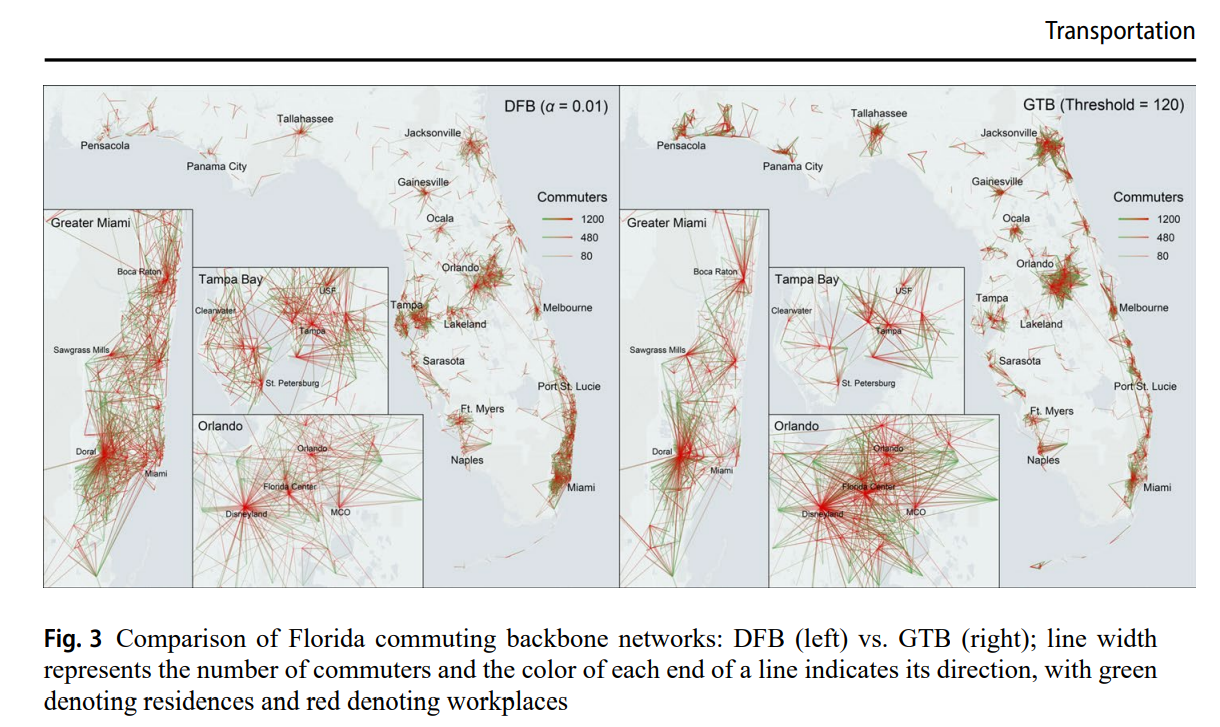
Visualizing mobility patterns is crucial to understanding spatial interaction patterns, yet it has become increasingly challenging due to the availability of large amounts of mobility data. The traditional thresholding method that displays only flows above a defined threshold value can overlook small but critical flows, leading to a biased representation of mobility patterns.
This research applies a network backbone approach that extracts the fundamental structure of the mobility network to provide a simplified yet meaningful representation. Specifically, it employs the disparity filter method to visualize commuting flows between census tracts in Florida.
The resulting backbone commuting network is evaluated by comparing it with the original network and the filtered network obtained through the thresholding method, considering geographic and statistical distributions. The results show that the disparity filter method is highly effective in creating a backbone network for visualizing complex mobility patterns, outperforming the traditional thresholding method.
Furthermore, the produced mobility backbone network can identify the most critical and heavily trafficked roads, providing valuable insights for urban planners and policymakers to make informed decisions about transportation infrastructure.
Wang, J., & Hu, Y. (2025). Visualizing complex mobility patterns using backbone networks. Transportation, s11116-025-10694-7.